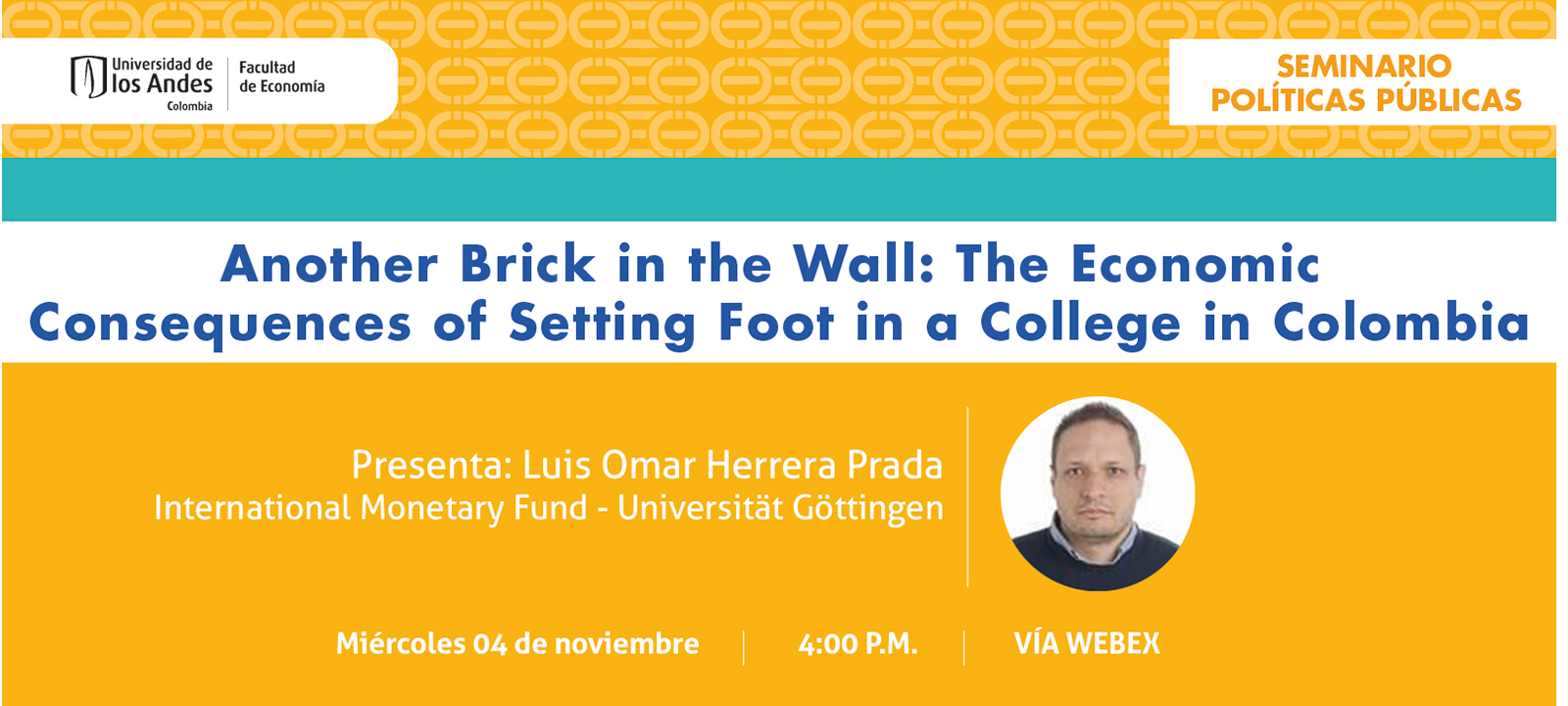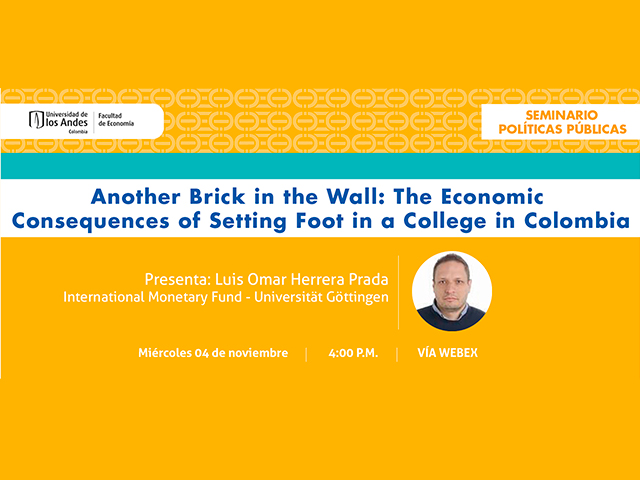Seminario de políticas públicas - Luis Omar Herrera

Using administrative data, I track the path of 5.4 million secondary school graduates to higher education and the formal labor market in Colombia. I compare graduates from the same secondary school cohort to estimate the premium of higher education and workers that earned a bachelors against their college classmates that finished 90% or more of the college course-work but did not graduate to estimate the sheepskin effect. Using a modified Mincer equation, I find that the Colombian labor market values a college graduate at the time of graduation the same as a secondary school graduate with five years of formal labor market experience. I also find high positive correlations between the quality of higher education institutions and students’ skills and earnings, and between on-time graduation and earnings. High-quality tertiary institutions boost the entry-level salary for its graduates, but this boost fades over time as others gain experience and graduates’ skills as workers are revealed. I found evidence of how higher education is slowly reducing the gender gap and improving income distribution. Finally, the sheepskin effect is about 12.6% on average and the returns for bachelors, diplomas, and masters are 15.1%, 33.6%, and 53.2%, respectively.

